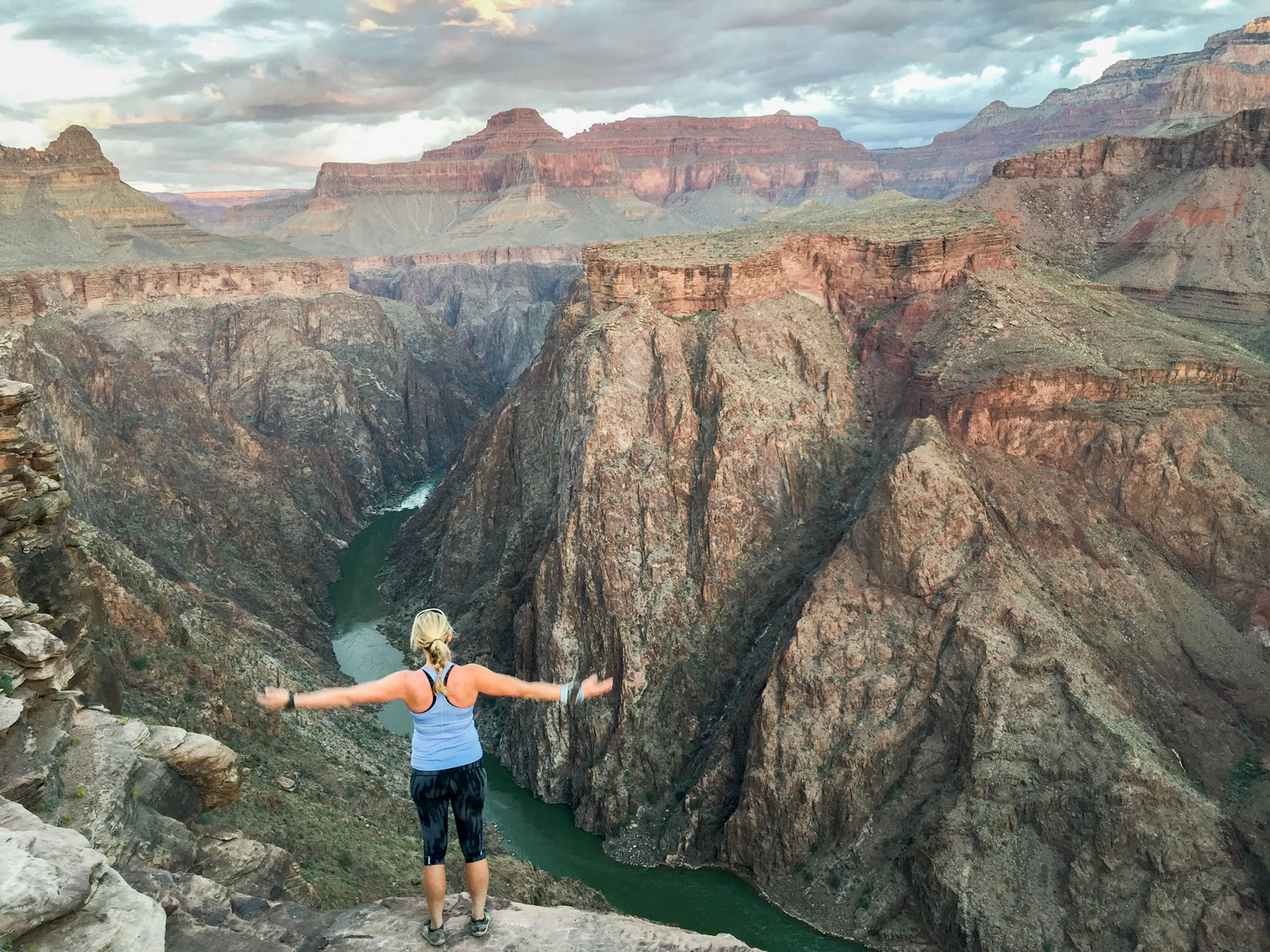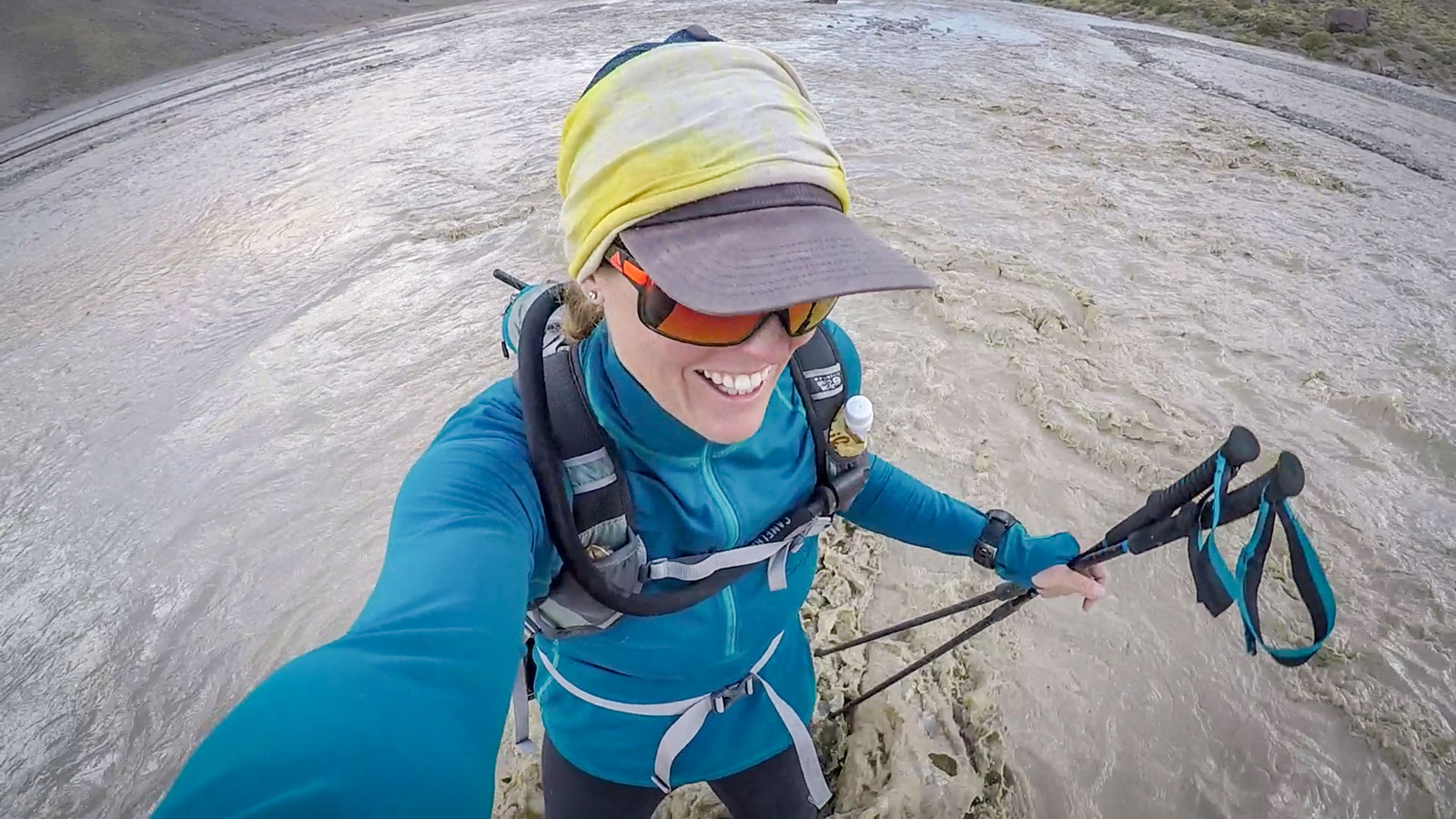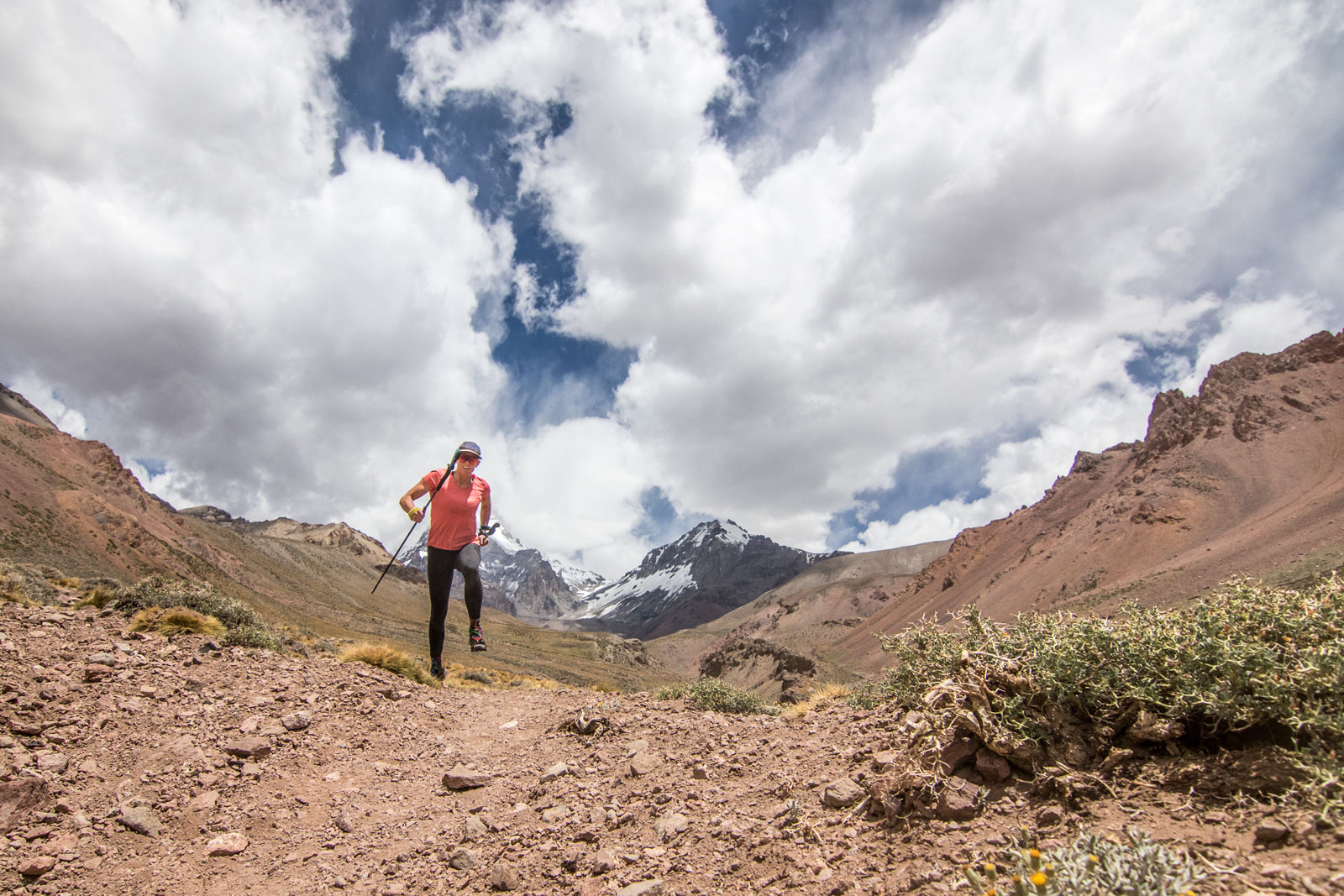The Local newsletter is your free, daily guide to life in Colorado. For locals, by locals.
Adventure photographer and athlete Suzanne Stroeer, known as Sunny, lives in Boulder—at least for a portion of the year. But most of the time, the former strategy consultant is adventuring, pursuing speed records on high-altitude peaks, guiding group treks, and leading big mountain expeditions.
In 2017, Outside Magazine called Sunny “the fastest woman you’ve never heard of.” Since then she’s been making herself known. In February, Stroeer became the first woman to circumnavigate and summit Aconcagua in Argentina, the second tallest of the Seven Summits. Her chosen route—called the “Full 360”—had only been completed by one other person. She completed the 64-mile loop in 47 hours and 30 minutes.

Now, Stroeer is tackling a self-supported, solo mission along the 812-mile Hayduke Trail—a challenging backcountry journey that weaves throughout southern Utah and northern Arizona. This time, she’s not looking to break a record. She’s raising awareness for wilderness preservation.
The Hayduke Trail includes sections of Bears Ears and Grand Staircase-Escalante National Monuments, which were recently reduced in size by two million acres by the Trump Administration in the largest cut of federal land protection in national history.
“Aside from the questionable legality, reducing Bears Ears and Grand Staircase-Escalante is a tragedy. Grand Staircase is one of the largest, road-less wilderness areas in the Lower 48,” Stroeer told 5280 before she started her journey on April 14. “I have a passion for preserving vast wilderness, because I understand what it’s like to not have space where you can get lost.” Born and raised in Germany, Stroeer points out that only about one percent of land is wilderness in her home country.
Hayduke’s route starts in Moab, Utah, and winds southwest through the Colorado Plateau’s deep desert canyons and sparsely vegetated mesas. It is Stroeer’s favorite region in the country.
“The land that surrounds Hayduke is obscure and remote,” she said. “The route will be a fun challenge: It depends on navigation—there are no trail markers—and it’s miles and miles and miles from the closest bailout point.”
Hayduke is lesser known than popular thru-hikes such as the Pacific Crest Trail or Appalachian Trail. It’s also not a maintained trail. There are no designated signs. Slot canyons, slickrock, old jeep roads, sandy washes, and trail segments are pieced together to create the general route. What’s more, long sections—up to 80 miles—are dry with no natural water sources. For that four-day period, through Grand Staircase, Stroeer will carry 18 pounds of water. Another 25-mile segment will require her to wade through the Escalante River. Last week, she cached food—oatmeal, bars, and Backpacker’s Pantry meals—that she’ll grab along the way.
As for gear, Stroeer packed an ultralight tent (for emergencies), the Ghost Whisperer Sleeping Bag, Ghost Whisperer Down Jacket, Ghost Lite Jacket, a water purifier, and a Garmin inReach satellite communicator for GPS tracking. Because of the nature of the trail, Stroeer’s success hinges on her route-finding skills.
The fastest known completion of Hayduke is currently held by adventurer and guide Andrew Skurka, who finished the mission in 32 days in 2009. While Stroeer said her endeavor is a speed mission, she’s not going for a record.
“The Hayduke is a backcountry route with lots of alternatives, so the trail community doesn’t condone the idea of fastest known times on that type of terrain,” she said. “I’m hoping to do it in 30 days and follow the main defined route, which was the original Hayduke Trail.” To reach her time goal, she’ll cover 25 to 35 miles per day. Most trekkers complete the trail in 60 to 100 days.
“One of the things that’s most appealing about the Hayduke is that it doesn’t take the shortest way. It meanders a ton to link the most beautiful, picturesque sections of the Colorado Plateau,” Stroeer said. The route covers six national parks—Arches, Canyonlands, Capitol Reef, Bryce Canyon, Grand Canyon, and Zion—as well as Bears Ears and Grand Staircase-Escalante National Monuments and Glen Canyon National Recreation Area.
Stroeer is no novice with regards to solo missions and extreme environments. Beyond her accomplishment on Aconcagua earlier this year, she also holds the women’s speed record on the Annapurna Circuit, a 136-mile Himalayan trail that crosses a 17,769-foot pass. Last November, she completed it in less than four days, 14 hours quicker than the previous fastest-known time. And she didn’t even train for the journey. She told Outside that she was in Nepal leading a mountaineering trip and was simply “looking for something to do.”
It’s not the records that she’s chasing; it’s the exploration of remote peaks and desert canyons that inspires all of Stoeer’s endurance feats.
“There’s something to be said for preserving intactness—not individual spots—and tens of miles where you can keep walking,” she said. “The decision to reduce these wilderness areas and not preserve that vastness is a loss that isn’t comprehensible. Once you start development, you don’t get that wilderness back.”
Follow Stroeer’s GPS track along the Hayduke Trail at sunnystroeer.com.










